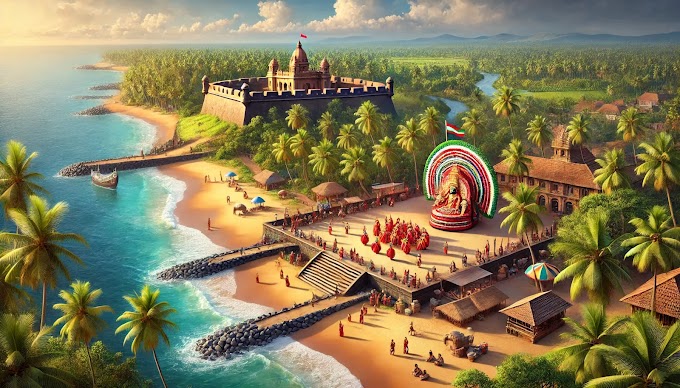 |
Image Source - Google | Image By Name: Hans A. Rosbach |
Delhi is home to several Mughal architectural marvels, and one of the most captivating among them is the Rang Mahal located within the Red Fort complex. The name "Rang Mahal," meaning "Palace of Colors," speaks to the vibrant beauty of this structure. Once a royal palace, it was used by Mughal emperors and their families for relaxation and recreation. The palace reflects the grandeur and opulence of Mughal architecture, offering a glimpse into the luxurious lifestyle of the era.
History of Rang Mahal
The Rang Mahal was built during the reign of Emperor Shah Jahan in the mid-17th century. It served as the residence for the emperor's wives and mistresses and was designed to provide a lavish retreat for the royal family. The palace is known for its beautifully painted walls, intricate floral designs, and inlaid mirrors that reflect the wealth and artistry of the Mughal era.
At the center of the Rang Mahal lies a marble basin known as Nahar-e-Bihisht, meaning "Stream of Paradise." This water channel was connected to a larger system that ran through the Red Fort, keeping the palace cool and adding to its serene ambiance. The name "Rang Mahal" itself comes from the colorful decorations that adorned the palace walls, symbolizing the vibrant life of the Mughal court.
Visiting Rang Mahal: Hours and Ticket Information
- Location: Inside the Red Fort, Delhi
- Visiting Hours: The Red Fort, including Rang Mahal, is open every day except Mondays from 7:00 AM to 5:30 PM.
- Ticket Prices:
- Indian Citizens: ₹50 per person
- Foreign Tourists: ₹250 per person
- Children under 15: Free entry
- Best Time to Visit: October to March, when the weather is pleasant and ideal for exploring the historical sites of Delhi.
Architectural Beauty of Rang Mahal
Rang Mahal is a stunning example of Mughal architecture, known for its combination of elegance and utility. The palace’s interiors were once decorated with richly painted floral designs, and the ceilings were adorned with intricate mirrorwork. The use of white marble, colorful inlays, and carvings made Rang Mahal stand out as a symbol of Mughal luxury.
While the palace’s vibrant decorations have faded over time, its architectural brilliance still impresses visitors. The marble water channel that runs through the palace is an iconic feature, representing the Mughals' sophisticated engineering and aesthetics.
Why You Should Visit Rang Mahal
A visit to Rang Mahal is an opportunity to step back in time and experience the grandeur of Mughal royalty. It’s a place where history comes alive through the walls, arches, and intricate details of the palace. If you’re exploring the Red Fort, the Rang Mahal is a must-visit spot for anyone interested in Mughal architecture, history, or the lavish lifestyle of the royal families.
The serene atmosphere, combined with the palace’s beautiful design, offers a peaceful retreat amid the busy streets of modern Delhi. The historical significance of Rang Mahal, paired with its architectural splendor, makes it an essential stop for history buffs and architecture enthusiasts alike.
Conclusion
Delhi’s Rang Mahal is not just another historical monument; it’s a testament to the grandeur of the Mughal empire and a showcase of their architectural mastery. Visiting Rang Mahal gives you a deeper understanding of the opulence and artistic finesse that defined the Mughal court. Whether you are drawn to its history, its architectural beauty, or the sheer magnificence of the Red Fort complex, Rang Mahal is a destination that will leave a lasting impression on your mind.
Be sure to add Rang Mahal to your Delhi itinerary and experience one of the most beautiful remnants of India’s rich Mughal heritage.






